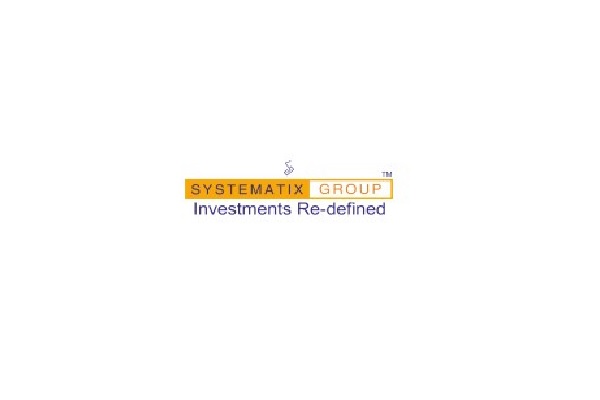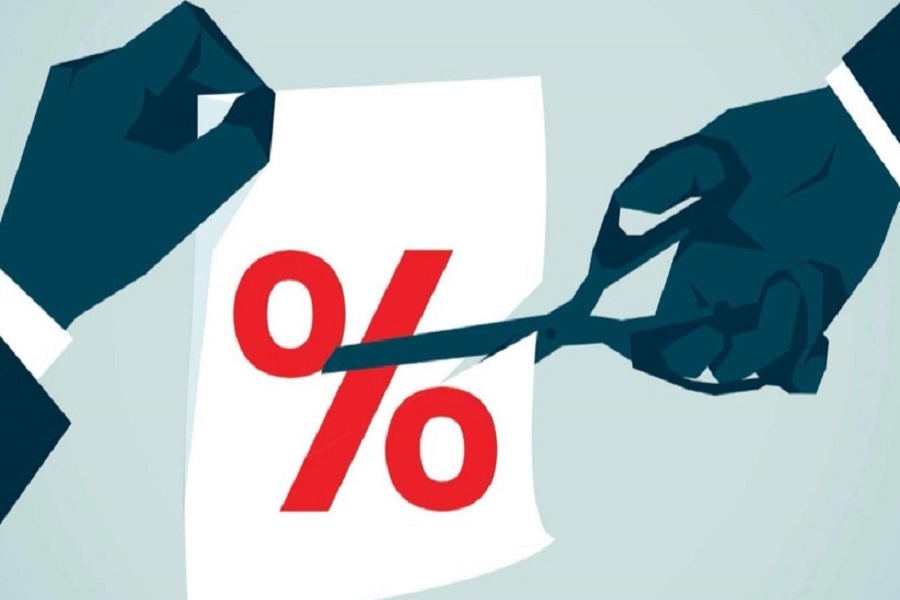Turmeric prices took a dip of -0.83% to settle at 13,906, largely due to improved production outlook - Kedia Advisory

GOLD
gold prices declined by 1.17% yesterday, closing at 56,927, driven lower by the strengthening US dollar, which hit its highest level since November at 107.2. This rise is due to expectations of prolonged high-interest rates, backed by hawkish comments from Federal Reserve officials. Despite this, positive economic indicators, such as the JOLTS report showing robust job openings and the ISM Manufacturing PMI signaling improved factory activity, reflect a resilient economy. Investors eagerly await the upcoming payrolls report and further Fed statements. The dollar gained ground against major currencies, particularly the Australian dollar, after the Reserve Bank of Australia maintained interest rates. In China, gold premiums dipped slightly but remained elevated due to strong investor demand and economic concerns. In India, lower gold prices did not boost retail purchases, as dealers charged premiums of up to $4 an ounce over domestic prices. From a technical standpoint, the market witnessed long liquidation, with a 1.25% drop in open interest, settling at 15,698. Gold's support level stands at 56,525, with a potential test of 56,115, while resistance is expected at 57,385, possibly leading to a test of 57,835.
Trading Ideas:
* Gold trading range for the day is 56115-57835.
* Gold dropped as dollar index extended gains to 107.2, its strongest level since November
* Hawkish comments from Fed officials continue to strengthen the expectation
* The JOLTS report showing a bigger-than-expected number of job openings last month
SILVER
The price of silver experienced a significant decline of -3.53% yesterday, closing at 67394. This drop was attributed to robust economic data that highlighted the resilience of the US economy in the face of high borrowing costs, raising concerns about the Federal Reserve's potential need to maintain elevated interest rates to combat inflation. Key economic indicators included the JOLTs report, which revealed a staggering 9.6 million job openings in August, surpassing estimates and reinforcing the tightness in the labor market. Additionally, the latest ISM PMI signaled a rebound in manufacturing production. These positive data points led Fed policymakers Bowman and Mester to suggest the possibility of another rate hike this year, while Bostic cautioned that interest rates would need to remain at their current level for an extended period before considering rate cuts. In contrast to the positive economic data, the IBD/TIPP Economic Optimism Index plummeted to 36.3 in October, well below market expectations and marking the 26th consecutive month of pessimistic readings. This decline was attributed to concerns about the prolonged impact of elevated interest rates on the US economy. From a technical perspective, the market saw an increase in open interest by 12.97%, settling at 28065, while silver prices dropped by -2463 rupees. Silver now finds support at 65625 and could potentially test 63850 levels if this support is breached. On the upside, resistance is expected at 69215, and a break above this level could push prices to test 71030.
Trading Ideas:
* Silver trading range for the day is 63850-71030.
* Silver dropped as strong economic data underscored the resilience of the US economy to high borrowing costs
* The Federal Reserve will be forced to leave interest rates elevated for a longer period to tame inflation.
* Data from the JOLTs showed job openings were at 9.6 million in August, well above estimates of 8.8 million
CRUDE
Crude oil faced a decline of -1.25%, closing at 7448, mainly influenced by a stronger dollar and concerns over rising oil supplies and the impact of higher interest rates on economic growth. Weak manufacturing data in the Euro area and uncertainties about China's economic growth further pressured oil prices. Turkey's decision to resume operations on an Iraqi pipeline after a six-month suspension and the potential easing of Saudi Arabia's voluntary supply cut by 1 million barrels per day added to supply concerns. Despite these factors, OPEC+ is unlikely to change its current oil output policy during its upcoming meeting. The ISM Manufacturing PMI for the US showed a slowing contraction in the manufacturing sector in September, with reduced price pressures. Additionally, the readiness of a key oil pipeline between Iraq and Turkey could alleviate global supply constraints. From a technical standpoint, open interest dropped by -10.69% to settle at 6284, and crude oil prices fell by -94 rupees. Support is at 7343, with the possibility of testing 7238 if it's breached, while resistance is anticipated at 7535, with potential for testing 7622 upon breaking above.
Trading Ideas:
* Crudeoil trading range for the day is 7238-7622.
* Crude oil dropped hurt by a stronger dollar and concerns about prospects of rising supplies
* Saudi Arabia could start to ease its additional voluntary supply cut of 1 millionbpd.
* Turkey's energy minister said the country will restart operations on a pipeline from Iraq that has been suspended for about six months.
NATURAL GAS
Natural gas experienced a minor dip of -0.12%, closing at 245.6, primarily due to forecasts of reduced demand driven by milder weather in the coming weeks and throughout the upcoming winter. Despite lower output, record gas exports to Mexico, and increased gas flow to U.S. liquefied natural gas (LNG) export plants, prices fell. In September, gas output in the lower 48 U.S. states slipped to 102.9 billion cubic feet per day (bcfd), down from a record 103.1 bcfd in August. Over the past four days, daily output decreased by about 2.0 bcfd to a preliminary three-month low of 101.2 bcfd. Meteorologists predict a shift from warmer-than-normal weather to mostly near-normal conditions in the lower 48 states from Oct. 7-17, leading to expectations of reduced U.S. gas demand, including exports. Despite this, pipeline exports to Mexico reached a record 7.2 bcfd in September, up from the prior high of 7.1 bcfd in August. From a technical standpoint, open interest increased by 6.51% to settle at 21381, while natural gas prices dropped by -0.3 rupees. Support is found at 238.8, with the potential for a test of 232 if it breaks, while resistance is anticipated at 249.2, with a possibility of reaching 252.8 upon breaking above.
Trading Ideas:
* Naturalgas trading range for the day is 232-252.8.
* Natural gas fell on forecasts for lower demand due to milder weather
* Prices fell despite a reduction in output, record exports to Mexico and a rise in the amount of gas flowing to U.S. LNG export plants.
* Average gas output in the lower 48 U.S. states slid to 102.9 bcfd in September from a record 103.1 bcfd in August.
COPPER
Copper faced a significant drop of -2.44%, closing at 704.8, driven by concerns about rising exchange inventories and a strong dollar, which raised doubts about industrial metal demand. Copper stocks in LME warehouses surged by over 200% since mid-July, reaching their highest levels since May of the previous year. This surge in inventory, along with expectations of fresh copper deliveries to LME warehouses, led to a 21-year high contango of $75 a ton for the cash versus the three-month copper contract. Data from the COMEX revealed that money managers held a net short position of 21,220 copper contracts on September 26, the largest since May 30, with short positions hitting 77,276 contracts, the highest since March 2020. The International Copper Study Group (ICSG) reported a deficit of 19,000 metric tons in the global refined copper market in July, compared to a 72,000 metric tons deficit in June. However, for the first seven months of the year, the market recorded a surplus of 215,000 metric tons, in contrast to a 254,000 metric tons deficit during the same period the previous year. July saw world refined copper output at 2.30 million metric tons, closely matching consumption at 2.32 million metric tons. From a technical perspective, copper saw a surge in open interest by 14.67% to settle at 6869, while prices declined by -17.65 rupees. Support levels stand at 698.8, with potential testing of 692.7 if this support is breached. Resistance is currently expected at 711.5, and prices may test 718.1 if they break above this level.
Trading Ideas:
* Copper trading range for the day is 692.7-718.1.
* Copper fell amid expectations of further rises in exchange inventories
* Stocks of copper in LME registered warehouses at 168,600 tons have climbed more than 200% since the middle of July
* Money managers were net short 21,220 copper contracts on Sept. 26, the biggest since May 30
ZINC
Zinc experienced a significant decline of -3.55%, settling at 224, largely due to the strength of the US dollar, which raised concerns about the demand for industrial metals. The market adjusted for increased zinc supplies used in steel galvanization and growing zinc stocks. Although combined zinc inventories in LME and Shanghai Futures Exchange (ShFE) warehouses saw some decline in the second and third quarters, they remain up by approximately 165% year-to-date. Japan's Mitsui Mining and Smelting Co Ltd announced plans to increase refined zinc production by 9.8% compared to the previous year. The global zinc market showed a narrowing surplus of 17,400 metric tons in July, down from 75,900 tons the previous month, as reported by the International Lead and Zinc Study Group (ILZSG). However, the overall surplus for the first seven months of the year stood at 495,000 metric tons, compared to a 199,000-ton surplus during the same period last year. In addition to these factors, the labor market remained strong, with job openings increasing to 9.61 million in August 2023, surpassing market expectations despite the Federal Reserve's tightening monetary policies. Technically, zinc witnessed long liquidation, with open interest dropping by -37.02% to settle at 3763, while prices fell by -8.25 rupees. Support levels are at 222.3, with potential testing of 220.5 if breached, and resistance is expected at 226.7, with a possibility of reaching 229.3 upon breaking above.
Trading Ideas:
* Zinc trading range for the day is 220.5-229.3.
* Zinc dropped as the soaring dollar reinforced concerns about demand for industrial metals.
* Zinc retreated as the market factored in increasing supplies of the metal used to galvanise steel and mounting stocks
* Combined zinc inventories in LME and warehouses monitored by ShFE fell back in the second and third quarters
ALUMINIUM
Aluminium faced a -1.46% decline, settling at 208.85, in line with other base metals, as the prospect of a hawkish Fed boosted the US dollar and dampened industrial sentiment. However, supply concerns prevented a more significant downturn. China, responsible for over half of global aluminium production, halted capacity expansion to curb oversupply and energy consumption from old infrastructure. Indonesia's ban on bauxite exports, a key aluminium ore, also posed a risk to output. This was evident with a 13% week-on-week reduction in deliverable stocks at the Shanghai Futures Exchange in late September.Economic data showed challenges in manufacturing. The UK Manufacturing PMI for September stood at 44.3, slightly up from August but among the weakest in 14 years. The Eurozone Manufacturing PMI remained at 43.4, while Germany's PMI pointed to a fifteenth consecutive month of manufacturing contraction. On the technical side, long liquidation occurred with a -11.73% drop in open interest, settling at 3,770. Prices fell by -3.1 rupees. Support for Aluminium is at 207.7, with potential testing at 206.5, while resistance can be expected around 210.4, and a breakout may lead to testing at 211.9.
Trading Ideas:
* Aluminium trading range for the day is 206.5-211.9.
* Aluminium eased as the outlook of a hawkish Fed lifted the US dollar and hampered industrial sentiment.
* China halted the expansion of production capacity beyond the current limit of 45 million tons
* The HCOB Eurozone Manufacturing PMI was confirmed at 43.4 in September 2023
COTTON CANDY
Cottoncandy experienced a -0.63% drop, settling at 60,400 due to profit booking, following earlier price increases prompted by reports of a pink bollworm attack in Haryana's cotton belt. The global cotton industry faces challenges with reduced production and consumption in the 2023-24 outlook. In the US, cotton projections for 2023/24 include higher starting stocks but lower production, exports, and ending stocks. Unexpectedly large warehouse stocks were reported for July 31, 2023. US cotton production is forecasted to be 860,000 bales lower, while exports and ending stocks are down as well. The season-average price is projected at 80 cents per pound, up 1 cent from the previous month. Worldwide cotton projections for 2023/24 also show lower starting stocks, production, consumption, trade, and ending stocks. In India, the 2023-2024 cotton season is expected to yield 330-340 lakh bales, with a significant sowing area. The current season saw 335 lakh bales, and new harvest continues to arrive. On the technical side, the market experienced long liquidation with a drop in open interest by -3.45% to settle at 112. Prices fell by -380 rupees. Support for Cottoncandy is at 60,240, with potential testing at 60,080, while resistance can be expected around 60,580, and a breakout may lead to testing at 60,760.
Trading Ideas:
* Cottoncandy trading range for the day is 60080-60760.
* Cotton dropped on profit booking after prices rose as cotton belt of Haryana, is witnessing an attack by pink bollworm.
* India is expected to see production of 330 lakh to 340 lakh bales in 2023-2024 that begins on October 1.
* China's cotton production was lowered to 5.9 million metric tons on reduced planted area for 2023/24
* In Rajkot, a major spot market, the price ended at 29013.65 Rupees dropped by -0.07 percent.
TURMURIC























